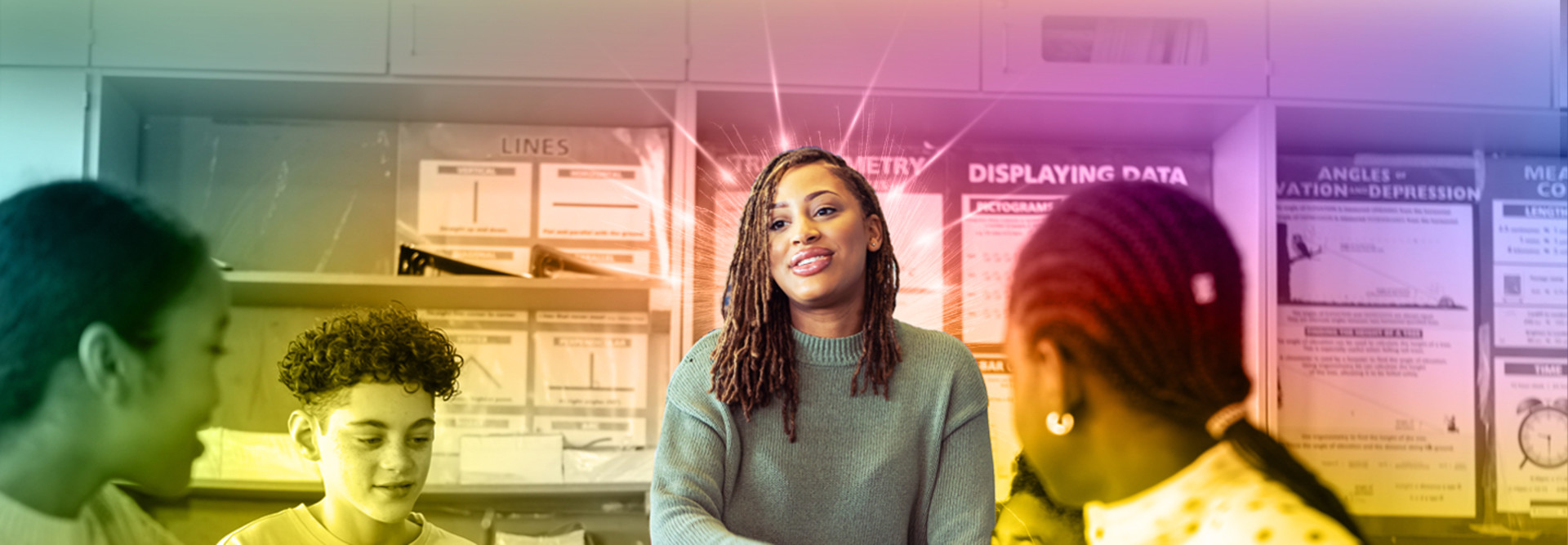They decided to implement the ViewSonic ViewBoard, which has a corresponding app that allows students to follow along with lessons from home if they need to learn virtually for any reason.
“We wanted something that really fit the needs of all of our students,” Williams says, applauding Stroh’s implementation of the piloted product in her classroom.
“The interface is really student- and teacher-friendly,” Stroh says. “What I loved about it is, as a 6th-grade teacher, I can pull up content and the ViewBoard allows me to annotate it. It gives me a lot of flexibility.” The district puts a heavy focus on Universal Design for Learning, and the ViewBoard helps her make learning more accessible to students.
Stroh loves the board’s ability to speak to English language learners in their native language. Also, students can easily project images from their one-to-one devices onto the board to demonstrate their learning.
KEEP READING: How can school districts minimize lag with wireless casting?
“She can cast her screen to the board from wherever she is, even from home if she wants,” Williams says. “She can also use the board as a whiteboard. The whiteboard part is amazing. It has a lot of digital tools, and you can bring in websites or YouTube videos. So, she could be presenting a slide deck and be walking around, or she could be up at the board writing and teaching.”
Williams plans to move more of the district to ViewBoards, collaborating with other teachers on using the boards to improve lessons.
Rolling Out Tech Solutions for Virtual Learning Academies
K–12 lessons don’t have to be flashy and exciting, but it’s way more fun when they are. Candy Ambrose, a fifth grade teacher at Alisal Union School District in Salinas, Calif., started working on eGlass this year in the district’s Alisal Virtual Academy. Director of Educational Technology Josh Harris says the AVA teachers use it most days for instruction.
“This tool is like a whiteboard that shows students what I would be writing if they were present in a classroom,” Ambrose says. “What makes it exciting is that it uses neon colors and has templates I can drag over. It is bright and engaging, and it motivates the students. Teachers and staff here at AVA are equally impressed.”
Harris worked with teachers to set up and troubleshoot the new technology, ensuring there was enough light for students to see the screen well and helping virtual students learn from home.
The 50-inch board uses adjustable in-glass lighting to make colors stand out against both light and dark backgrounds, and has a camera and a built-in mic for connecting on Google Meet or Zoom.
“It also has really powerful software that lets teachers superimpose transparent diagrams, templates and PDFs on the glass, which the teacher can then mark up, while his or her face can be seen big and clear right next to the work they are doing,” Harris adds.
eGlass helps #K12 teachers convey #STEM concepts, because math involves explaining “really deep concepts in a visual way,” says @eenglished. Learn more about this #K12TechTrends22 solution here: https://t.co/apmgexdreJ pic.twitter.com/FUAkcdKqWO
— EdTech K–12 Magazine (@EdTech_K12) March 25, 2022
“Our main goal is for teachers to become more comfortable with eGlass, to the point that they start doing what teachers always do when they get really good with an ed tech tool: something creative and amazing that I couldn’t even imagine,” Harris says.
Prioritizing Educator Feedback to Introduce New Software Options
The teachers’ lunch table is always full of tech ideas, and most recently, Adobe Express was the topic of conversation, says Kat Eroskey, a media design and communication teacher at Lakota Local Schools, north of Cincinnati. Students there are designing fictional companies, internet safety posters and logos with their new tech software.
“Several teachers had approached me about students wanting to create web pages,” says Tiffany Rexhausen, the district’s innovation specialist. “We already had approval in our district for Adobe products, so we decided to use Adobe Express. I had previously used this tool to help create web pages for our curriculum nights while parent events were still being held virtually due to COVID.”
Eroskey is excited about what she describes as “professional quality graphics” that students have been able to produce to show what they’ve learned. “Spending the extra time to turn an average written assignment into a colorful infographic or poster can make a huge difference in a student’s understanding of a concept,” she says.
UP NEXT: Explore professional development tips that can support teacher retention in K–12 schools.











